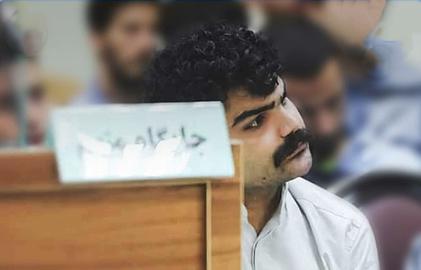Seldom in modern history have a people felt so misperceived by the outside world as Iranians after the 1979 Islamic Revolution. That year, Ayatollah Ruhollah Khomeini and his followers so redefined Iran’s official identity, and so frightened the majority of would-be visitors, that the “real Iran” (as so many Iranians now call it) all but disappeared in western imaginations.
Travel to Iran today, and you will meet people keen to hear all about the differences between your preconceived notions of the country and the realities you have discovered. There is, of course, no excuse for travelers to arrive uninformed -- there is no shortage of good information available about Iran -- but many Iranians seem to fear a lack of due diligence.
It seems almost a miracle in this US election season that none of the candidates has yet made a major Iran gaffe (Donald Trump did at one point seem to confuse the Revolutionary Guards Qods Force with the Kurds), but it’s only a matter of time. Till then, bad memories of past leaders' misperceptions are apt to resurface. It’s not that Iranians necessarily expect or want outsiders to cut their government a break, but many do worry that incurious legions see their country – with its distinct national culture and domestic struggle for democracy -- as nothing more than a pious desert tyranny full of camels and terrorists.
Axis of Not-Quite-Sure
Surely it’s not that bad, you ask? Well, consider recent history. Following the Islamic jihadist terrorist attacks on New York and Washington on September 11, 2001, a sentimental country tune by the singer Alan Jackson captured just how ill-equipped some Americans were to place the horrors they had witnessed in a geopolitical or ideological context. In his song Where Were You (When the World Stopped Turning) Jackson sang,
I'm just a singer of simple songs
I'm not a real political man
I watch CNN but I'm not sure I could
Tell you the difference in Iraq and Iran
One could, at least, credit Jackson for his honesty. But had he done a little research online, he could have learned – from the CNN website no less – that while Saddam Hussein and his state-controlled media had gloated over the attacks, Iranian president Mohammad Khatami had expressed his sympathy with the victims, and called the atrocity the ugliest form of terrorism he had ever seen.
Jackson, of course, wasn’t the only American to implicitly link Iraq and Iran.
In his 2002 State of the Union address, President George W. Bush lumped Iran, Iraq, and North Korea together as members of an “Axis of Evil.” He accused all three of supporting terrorism and seeking weapons of mass destruction. Even though his claims were plausible, his reference to an “axis” caused needless confusion, because it seemed to imply a three-way alliance between Iran -- where an intense struggle for greater democracy was then going on -- and two closed and terrorized totalitarian states.
Distorted on Screen
Of course, people were getting Iran wrong long before the 2000s. While western news outlets criticized the Shah over human rights abuses in the 1970s and challenged his style of rule in major network interviews, no one in the media really saw a revolution coming. Iran was an accessible and somewhat neutral setting for western TV and film productions; an episode of Jacob Bronowski’s 1973 BBC series The Ascent of Man and a fanciful 1974 film of Agatha Christie’s Ten Little Indians stand out as examples.
After 1979, Iran presented a horrific image to the world as a holder of American hostages, a war zone and a place of political repression (all of which it was), and the flow of information out of the country became rather piecemeal. Post-revolutionary attempts to depict Iran on screen—especially the silver screen—became difficult and contentious.
One effort that still rankles with Iranians was the 1991 film Not Without My Daughter. The film was an earnest attempt to depict regressive changes in Iranian family law through the story of an American woman in a custody dispute with her Iranian husband. Unfortunately, it presented such a negative take on everyday Iranian customs and culture that it alienated most Iranian viewers—some of whom might otherwise have sympathized with its take on women’s diminished custody rights.
Later, purveyors of American popular culture advanced a more generalized negativity about Iran that—unwittingly—targeted the Iranian cultural heritage that serves to inspire and sustain humanistic hopes inside the country. In 1993, an episode of The X-Files involved an Islamic terrorist group named, of all things, “The Isfahan” – a reference to Iran’s handsomest city, and one of its cultural capitals. In 2006, the comic book movie 300 depicted the ancient Persian Emperor Xerxes as an effete (and heavily pierced) avatar of oriental despotism. Elements of Iran’s favorite ancient site, the ruins of Persepolis, also featured in Xerxes’s villain’s lair. Xerxes’s army of “Immortals,” whose originals feature in well-preserved friezes at Persepolis, appeared in the film as silver-faced, black-hooded ghouls. All this amounted to mere creative license for most viewers, but for Iranians, the context was everything.
Tell Us Some Good News
Not all the nonsense that gets talked about Iran is negative. Well-meaning outsiders often try to talk up Iran in ways that don’t quite ring true. When American liberals look back with guilty consciences at America’s role in the overthrow of Iranian Prime Minister Mohammad Mossadeq in 1953, for example, they often say he was “democratically elected.” Bernie Sanders, perhaps the first American presidential candidate to mention Mossadeq on the campaign trail, used these words to describe Iran’s national hero in the Fifth Democratic Debate in February. Alas, the truth is that voters did not elect Mossadeq. The Shah had appointed him. Mossadeq was certainly a popular leader, but Iran in 1953 was not a pristine democracy.
Another popular fallacy is that the Cyrus Cylinder, the 2500-year-old charter of Iran’s ancient Achaemenid emperor Cyrus, is an early human rights document. This view, which was promoted by the Shah, has been enshrined by no less an authority than the United Nations, which keeps a replica of the Cylinder on its second-floor hallway. Human rights experts who study the translation of the charter, however, are unlikely to agree. Speaking at the British think tank Chatham House in 2012, the eminent human rights lawyer Geoffrey Robertson tore into the notion. “That's utterly a journalistic invention,” he said. “[The Cyrus Cylinder is] a celebration...of a primitive God and a tyrant, and Cyrus was a tyrant. It's got one line where he sees the poor prisoners who had been taken into Babylon and he says they looked half starved...He shows a spark of mercy. It's the first example of a spark of mercy.”
Iranian officials, too, have a habit of presenting dubious good news as fact, especially on the human rights front. In an interview with Charlie Rose last year, Iranian Foreign Minister Javad Zarif said, “We do not jail people for their opinions,” a statement that drew outrage in light of Iran’s long history of imprisoning people for expressing political and religious views. Sadegh Larijani, the head of Iran’s judiciary, has said that Iran does not persecute members of Iran’s Baha’i community for their faith, despite all evidence to the contrary. His brother Javad Larijani, head of Iran’s High Council for Human Rights, has denied that Iran holds political prisoners.
Occasionally, Iranian officials will also advance conservative myths about Iran. When in 2007 an audience member at Columbia University confronted then-president Mahmoud Ahmadinejad over the treatment of homosexuals in Iran, he replied, “In Iran we don’t have homosexuals like in your country.” Whether he expected to be believed, or just wanted to offend his audience, is anyone’s guess.
Seeing Clearly
All of this raises the question of whether any country can truly be “rightly” perceived, and the answer, of course, is no. (Consider, for example, that no one has ever written a definitive American novel or travelogue). Iran just happens to be particularly susceptible to misperception -- and to claims of misperception -- because its identity is so hotly contested both within its borders and beyond them, and because whoever one is, wherever one is, there can be no excuse for lacking an opinion about Iran.
visit the accountability section
In this section of Iran Wire, you can contact the officials and launch your campaign for various problems
























comments